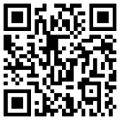Development of Interactive Learning Media for Software Engineering Subject Chapter Process Modeling in Higher Education
Abstract
Full Text:
PDFReferences
D. A. Bhardwaj, “Importance of Education in Human Life: a Holistic Approach,” open access, vol. 2, no. 2, hlm. 6, 2016.
Ms. Gajalakshmi P., “SOFTWARE DEVELOPMENT LIFECYCLE MODEL (SDLC) INCORPORATED WITH RELEASE MANAGEMENT,” International Research Journal of Engineering and Technology (IRJET), vol. 3, no. 4, hlm. 1536–1543, 2016.
S. Pukdesree, “The Comparative Study of Collaborative Learning and SDLC Model to develop IT Group Projects,” vol. 6, no. 4, hlm. 10.
Y. Bassil, “A Simulation Model for the Waterfall Software Development Life Cycle,” International Journal of Engineering, vol. 2, no. 5, hlm. 7, 2012.
D. Davies, D. Jindal-Snape, C. Collier, R. Digby, P. Hay, and A. Howe, “Creative learning environments in education—A systematic literature review,” Thinking Skills and Creativity, vol. 8, hlm. 80–91, Apr 2013, doi: 10.1016/j.tsc.2012.07.004.
M. Suleman, K. H. Sugiyarto, and J. Ikhsan, “Development of Media Three-dimensional (3D) Visualization using Virtual Reality on Chemistry Education,” J. Phys.: Conf. Ser., vol. 1397, hlm. 012034, Des 2019, doi: 10.1088/1742-6596/1397/1/012034.
A. Muhardi, B. S. Anwar, C. K. Rukun, and D. Jasrial, “Learning Model Development Using Moodle E-Learning Software By Implementing Borg And Gall Method,” hlm. 10.
R. A. Fani and P. Sukoco, “Volleyball learning media using method of teaching games for understanding adobe flash-based,” PETiER, vol. 2, no. 1, hlm. 34, Nov 2019, doi: 10.33292/petier.v2i1.6.
P. Angelina, “DEVELOPING TASK-BASED LEARNING MODEL FOR LANGUAGE TEACHING MEDIA COURSE IN ENGLISH LANGUAGE EDUCATION STUDY PROGRAM,” LLT, vol. 21, no. 1, hlm. 27–35, Mar 1998, doi: 10.24071/llt.2018.210104.
S. Siagian and Y. Wau, “Development of Interactive Multimedia Learning in Learning Instructional Design,” Journal of Education and Practice, hlm. 8, 2014.
M. Sumiati, F. Rizal, and M. Anwar, “DEVELOPMENT OF MOBILE-LEARNING MEDIA ON BASIC ELECTRICITY AND ELECTRONICS SUBJECT,” hlm. 6.
M. W. P. Ningrum and W. Purnomo, “RELATIONSHIP BETWEEN READINESS AND ANXIETY LEVEL IN ELEMENTARY SCHOOL STUDENTS FACING MENARCHE IN PADEMAWU SUB-DISTRICT, PAMEKASAN,” JBK, vol. 9, no. 2, hlm. 95, Okt 2020, doi: 10.20473/jbk.v9i2.2020.95-103.
A. Noviana, Abdurrahman, U. Rosidin, and K Herlina, “Development and Validation of Collaboration and Communication Skills Assessment Instruments Based on Project-Based Learning,” Journal of Gifted Education and Creativity, vol. 6, no. 2, hlm. 133–146, 2019.
J. Simamarta, Rekayasa Perangkat Lunak. Yogyakarta: Andi, 2010.
R. S. Pressman, Rekayasa Perangkat Lunak Edisi 7. Yogyakarta: Andi, 2010.
Rosa and M. Shalahuddin, Rekayasa Perangkat Lunak. Bandung: Informatika, 2010.
DOI: http://dx.doi.org/10.17977/um010v3i22020p54-59
Refbacks
- There are currently no refbacks.
 | Letters in Information Technology Education (LITE) |

1.png)
1.png)
4.png)
1.png)
.png)
.png)

3.png)
1.png)
1.png)

3.jpg)